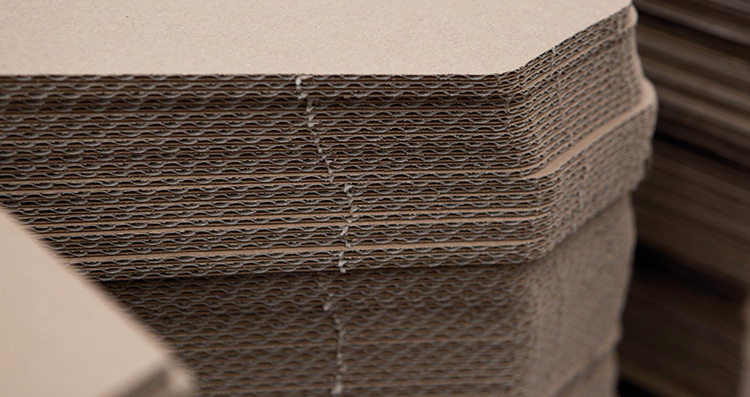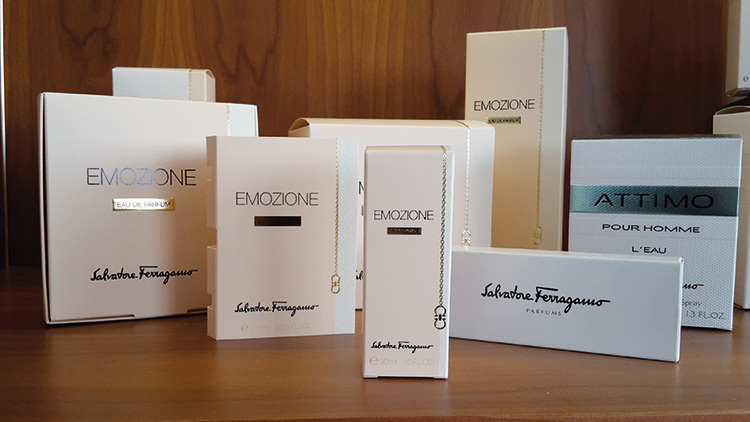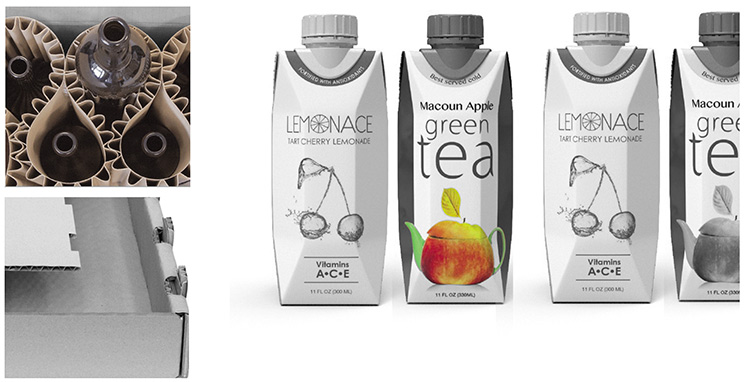Cellulose packaging – Data 2018
Paper packaging is characterized by wide use in virtually every manufacturing sector, both as primary and as secondary packaging. It is especially important as transport and accessory packaging (labeling, protective material). Data and facts on the sector in Italy.

photo: Deles
According to the most recent Eurostat data, referring to 2018, the paper converting industry (which includes the packaging segment) of the EU-28 logged a turnover of some 109.5 billion euro (+5,6% over 2017).
At the production level, growth is reduced and has settled at around +0.9%.
The top five countries by turnover continue to be Germany, Italy, the United Kingdom, France and Spain. Among these, the growth range is between 3% and 5%, with Germany leading (+4.8%), followed by Spain (+4.3%), France (+3.1%) , Italy (+2.9%), United Kingdom (+1.2%).
Cellulose packaging in Italy
According to the classification of “Imballaggio in cifre” - a volume published by Istituto Italiano Imballaggio each year as a snapshot of the Italian packaging sector - paper packaging can be subdivided into the following:
- corrugated cardboard sheets and containers (including displays);
- folding board boxes and cases
- large format paper bags;
- other (cellulose drums, tubes, wrapping paper, small bags and shoppers, labels, paper supports for fabric and apparel, etc.);
- primarily paper rigid laminated containers.
Paper packaging is characterized by wide use in virtually every manufacturing sector, both as primary and as secondary packaging (this is the case of cardboard boxes used in cosmetics or pharmaceuticals).
It is especially important as transport and accessory packaging (labeling, protective material).
In 2018, cellulose packaging represented 33% of all packaging produced (by t). According to numbers calculated by Istituto Italiano Imballaggio for the 2019 edition of “Imballaggio in cifre”, a total of 5.440.000 t of empty packaging were produced in Italy during the past year (including primarily paper rigid laminated containers), a 1.9% rise over 2017. Exports grew by 2.9% and imports by 1.3%, with apparent use at around 4,967,000 (+1.8% compared to the previous year).

Corrugated cardboard packaging
Corrugated cardboard represents 71% of cellulose packaging, with a 2018 production reaching 3,886,000 t (+2.5% compared to 2017). Corrugated cardboard is primarily used as transport packaging, and it is thanks to this use that this type has seen constant growth in recent years. The positive input of online commerce continues. Indeed, in 2018 the sole purchases of goods (excluding services) grew by 25%, moving important quantities of corrugated cardboard boxes and not only, because often the protection packaging is also composed of waste from the production of corrugated cardboard boxes.
Even the production of fruit and vegetable crates has contributed to the good performance of this material, as an increasing number of fruit and vegetable companies prefer them to wooden crates.
Foreign trade saw a -6.3% decline in imports and a +7.6% rise in exports, bringing apparent use to 2%.
According to analysis of sectors monitored by the III Database, 60% of corrugated cardboard is used in the food sector (food + beverage + fresh fruit and vegetables), while the remaining 40% is used in furniture (12%) and the non-food sector, which is to say chemicals, electronics, construction, etc. (28%).

Folding board boxes and cases
This material is used primarily to produce folding cases (83%) and boxes (17%).
Folding cases can be 100% board or laminated with PE film or aluminium foil. Lamination with plastic or aluminium film is generally necessary in order to confer an appealing look, such as in the cosmetic sector, or to respond to specific requirements having to do with the packaging’s use.
In 2018, production amounted to 790 t/000 (+0.9% compared to the previous year). As far as concerns use, folding cases and folding board boxes are distributed as follows: 43.6% food, 18.9% beverage (mainly clusters), 10.2% cosmetics and pharmaceuticals, 27.3% other non-food.
The primary users of folding board boxes include the footwear, leather and clothing sectors.
Large format paper bags
In 2018, this category saw a production of 197,000 t, up 1% compared to 2017, supported largely by domestic demand, up approximately 4.6%. Foreign trade on the other hand showed a downturn, which closed the year with -6.9% for imports and -5.6% for exports.
Construction remains the primary target sector for this category of packaging (64.7%); foods such as rice, flour, coffee and legumes use 14.7%, followed by animal feeds (with a 9.6% share) and “other” (11%).
Other packaging categories
Other cellulose packaging types include cellulose drums and tubes for packaging bottles, cardboard tubes for use in the home, wrapping paper, parchment paper and sulfite wrapping paper, corrugated paper, small bags, shoppers, automatic wrapping, paper sheets for clothing, labels, folding board and paperboard displays, and so on.
It is estimated that, in 2018, total production of this category reached 428 t/000, -0,4% over 2017 when production reached 429 t/000.
Foreign trade is growing as far as imports are concerned (+1.5%), while exports are down by -0.8%; apparent use is substantially stable.
Primarily paper rigid laminated containers
This type of packaging is used primarily in the beverage sector, but also finds uses in the food sector, particularly in packaging preserved foods.
In recent years, what is commonly known as brick packaging has been going through a slump, with steady production and turnover. This stability concerns both production and turnover: already since 2015, the former has settled at around 139 t/000, while the estimated turnover is around 470 million euros. However, within the areas of use, there are some variations: in 2018, in fact, a decrease in the use of laminated containers in the milk sector was confirmed, following a drop in consumption of the product, compensated, however, by a recovery of positions in the non-alcoholic beverages and other sectors (mainly food preserves).
2018: recycling cellulose packaging in italy
According to Comieco numbers, some 3,981 t/000 of cellulose packaging waste was recycled in 2018 (+2.5 % over 2017).
If we also consider their energy generation, the recycling percentage rises from 79% in 2017 to 81% in 2018.
COMIECO also reveals that the recycling of mixed waste paper is stable, while that of corrugated cardboard has grown by 5%.
That consortium estimates that, over the next two years, that share will rise by +1.2% in 2019 and +17% in 2020. The amount recycled is growing slowly but steadily, in line with production and projections of increasing separate collection in central and southern Italy.
RAW MATERIAL PRICES Istituto Italiano Imballaggio monitors the index prices of raw materials used to produce packaging on a monthly basis. In 2018, all index prices for raw materials used to produce paper packaging were on the rise. The trend is driven by corrugated cardboard, with average growth of 9% (2018 over 2017).
Next, for the raw material used to produce the paper bags, the annual average growth rate turns out to be around 7.5%, while cardboards register an annual average of +1.4%, the price of recycled paper also growing at an annual average of around 2.3%.
Barbara Iascone
Istituto Italiano Imballaggio

















